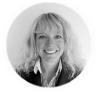The independent resource on global security
Naval Incident Management in Europe, East Asia and South East Asia

March 2023
Stockholm
SIPRI
Unprecedented global turbulence in 2022 has demonstrated the need to pay increased attention to naval operations. Enhanced military capability allows naval power projection far beyond home waters. New threats and challenges are emerging from technological advances and new applications, not least the vulnerability of warships and naval facilities to cyber intrusions and cyberattacks.
As states implement the programmes they need to protect and promote their interests at sea, there is also likely to be an increase in the number of close tracking incidents. How effective current risk reduction mechanisms will be at dealing with incidents at sea is unclear. This Insights Paper provides a preliminary assessment of the existing mechanisms and suggests areas for further improvement.
Table of contents
I. Introduction
II. Classifying incidents and risks
III. Naval incidents in a time of geopolitical competition
IV. Emerging naval risks
V. Current risk reduction mechanisms
VI. Conclusions and recommendations


